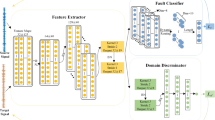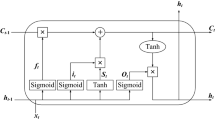Abstract
The conventional troubleshooting methods for high-speed railway on-board equipment, with over-reliance on personnel experience, is characterized by one-sidedness and low efficiency. In the process of high-speed train operation, numerous text-based on-board logs are recorded by on-board computers. Machine learning methods can help technicians make a correct judgment of fault types using the on-board log reasonably. Therefore, a fault classification model of on-board equipment based on attention capsule networks is proposed. This paper presents an empirical exploration of the application of a capsule network with dynamic routing in fault classification. A capsule network can encode the internal spatial part-whole relationship between various entities to identify the fault types. As the importance of each word in the on-board log and the dependencies between them have a significant impact on fault classification, an attention mechanism is incorporated into the capsule network to distill important information. Considering the imbalanced distribution of normal data and fault data in the on-board log, the focal loss function is introduced into the model to adjust the imbalanced data. The experiments are conducted on the on-board log of a railway bureau and compared with other baseline models. The experimental results demonstrate that our model outperforms the compared baseline methods, proving the superiority and competitiveness of our model.
Similar content being viewed by others
References
X. Ma, Y. B. Si, Z. Y. Yuan, Y. H. Qin, Y. Q. Wang. Multistep dynamic slow feature analysis for industrial process monitoring. IEEE Transactions on Instrumentation and Measurement, vol. 69, no. 12, pp. 9535–9548, 2020. DOI: https://doi.org/10.1109/TIM.2020.3004681.
Y. Zhao, T. H. Xu. Text mining based fault diagnosis for vehicle on-board equipment of high speed railway signal system. Journal of the China Railway Society, vol. 37, no. 8, pp. 53–59, 2015. DOI: https://doi.org/10.3969/j.issn.1001-8360.2015.08.009. (in Chinese)
X. Liang, H. F. Wang, J. Guo, T. H. Xu. Bayesian network based fault diagnosis method for on-board equipment of train control system. Journal of the China Railway Society, vol. 39, no. 8, pp. 93–100, 2017. DOI: https://doi.org/10.3969/j.issn.1001-8360.2017.08.013. (in Chinese)
W. Shangguan, Y. H. Yuan, J. Wang, F. W. Hu. Research of fault feature extraction and diagnosis method or CTCS on-board equipment (OBE) based on labeled-LDA. Journal of the China Railway Society, vol. 41, no. 8, pp. 56–66, 2019. DOI: https://doi.org/10.3969/j.issn.1001-8360.2019.08.008. (in Chinese)
L. J. Zhou, Y. Dong. Research on fault diagnosis method for on-board equipment of train control system based on GA-BP neural network. Journal of Railway Science and Engineering, vol. 15, no. 12, pp. 3257–3265, 2018. DOI: https://doi.org/10.19713/j.cnki.43-1423/u.2018.12.031. (in Chinese)
Z. J. Lou, Y. Q. Wang. New nonlinear approach for process monitoring: Neural component analysis. Industrial & Engineering Chemistry Research, vol. 60, no. 1, pp. 387–398, 2021. DOI: https://doi.org/10.1021/acs.iecr.0c02256.
K. Aukkapinyo, S. Sawangwong, P. Pooyoi, W. Kusakunniran. Localization and classification of rice-grain images using region proposals-based convolutional neural network. International Journal of Automation and Computing, vol. 17, no. 2, pp. 233–246, 2020. DOI: https://doi.org/10.1007/s11633-019-1207-6.
A. X. Li, K. X. Zhang, L. W. Wang. Zero-shot fine-grained classification by deep feature learning with semantics. International Journal of Automation and Computing, vol. 16, no. 5, pp. 563–574, 2019. DOI: https://doi.org/10.1007/s11633-019-1177-8.
L. C. Li, Z. Y. Wu, M. X. Xu, H. L. Meng, L. H. Cai. Combining CNN and BLSTM to extract textual and acoustic features for recognizing stances in mandarin ideological debate competition. In Proceedings of the 17th Annual Conference of the International Speech Communication Association, San Francisco, USA, pp. 1392–1396, 2016. DOI: https://doi.org/10.21437/Interspeech.2016-324.
S. Sabour, N. Frosst, G. E. Hinton. Dynamic routing between capsules. In Proceedings of the 31st International Conference on Neural Information Processing Systems, ACM, Long Beach, USA, pp. 3859–3869, 2017.
M. Yang, W. Zhao, L. Chen, Q. Qu, Z. Zhao, Y. Shen. Investigating the transferring capability of capsule networks for text classification. Neural Networks, vol. 118, pp. 247–261, 2019. DOI: https://doi.org/10.1016/j.neunet.2019.06.014.
A. Vaswani, N. Shazeer, N. Parmar, J. Uszkoreit, L. Jones, A. N. Gomez, L. Kaiser, I. Polosukhin. Attention is all you need. In Proceedings of the 31st International Conference on Neural Information Processing Systems, ACM, Long Beach, USA, pp. 6000–6010, 2017.
X. Zhang, Q. Yang. Transfer hierarchical attention network for generative dialog system. International Journal of Automation and Computing, vol. 16, no. 6, pp. 720–736, 2019. DOI: https://doi.org/10.1007/s11633-019-1200-0.
B. Liang, Q. Liu, J. Xu, Q. Zhou, P. Zhang. Aspect-based sentiment analysis based on multi-attention CNN. Journal of Computer Research and Development, vol. 54, no. 8, pp. 1724–1735, 2017. DOI: https://doi.org/10.7544/issn1000-1239.2017.20170178. (in Chinese)
Y. Kim, H. Lee, K. Jung. AttnConvnet at semeval-2018 task 1: Attention-based convolutional neural networks for multi-label emotion classification. In Proceedings of the 12th International Workshop on Semantic Evaluation, New Orleans, Louisiana, pp. 141–145, 2018. DOI: https://doi.org/10.18653/v1/S18-1019.
China Railway Corporation. Typical Faults of Train Control On-board Equipment, Beijing, China: China Railway Publishing House, pp. 29–87, 2013. (in Chinese)
J. Z. Zhang. Research on Fault Combination Prediction Method for on-board Equipment of CTCS Based on Cross Entropy Theory, Master dissertation, Beijing Jiaotong University, China, 2019. (in Chinese)
Y. B. Si, Y. Q. Wang, D. H. Zhou. Key-performance-indicator-related process monitoring based on improved kernel partial least squares. IEEE Transactions on Industrial Electronics, vol. 68, no. 3, pp. 2626–2636, 2021. DOI: https://doi.org/10.1109/TIE.2020.2972472.
T. Mikolov, K. Chen, G. Corrado, J. Dean. Efficient Estimation of Word Representations in Vector Space, [Online], Available: https://arxiv.org/abs/1301.3781, 2013.
Z. W. Zhao, Y. Z. Wu. Attention-based convolutional neural networks for sentence classification. In Proceedings of the 17th Annual Conference of the International Speech Communication Association, San Francisco, USA, pp. 705–709, 2016. DOI: https://doi.org/10.21437/Interspeech.2016-354.
B. Z. Guo, W. L. Zuo, Y. Wang. Double CNN sentence classification model with attention mechanism of word embeddings. Journal of Zhejiang University (Engineering Science), vol. 52, no. 9, pp. 1729–1737, 2018. DOI: https://doi.org/10.3785/j.issn.1008-973X.2018.09.013. (in Chinese)
T. Y. Lin, P. Goyal, R. Girshick, K. M. He, P. Dollar. Focal loss for dense object detection. IEEE Transactions on Pattern Analysis and Machine Intelligence, vol. 42, no. 2, pp. 318–327, 2020. DOI: https://doi.org/10.1109/TPAMI.2018.2858826.
S. Ioffe, C. Szegedy. Batch normalization: Accelerating deep network training by reducing internal covariate shift. In Proceedings of the 32nd International Conference on Machine Learning, ACM, New York, USA, pp. 448–456, 2015.
S. del Rio, V. Lopez, J. M. Benitez, F. Herrera. On the use of MapReduce for imbalanced big data using Random Forest. Information Sciences, vol. 285, pp. 112–137, 2014. DOI: https://doi.org/10.1016/j.ins.2014.03.043.
K. Cho, B. Van Merrienboer, C. Gulcehre, D. Bahdanau, F. Bougares, H. Schwenk, Y. Bengio. Learning phrase representations using RNN encoder-decoder for statistical machine translation, [Online], Available: https://arxiv.org/abs/1406.1078, Sep 3, 2014.
W. Shangguan, Y. Y. Meng, J. M. Yang, B. G. Cai. LSTM-BP neural network based fault diagnosis for on-board equipment of Chinese train control system. Journal of Beijing Jiaotong University, vol. 43, no. 1, pp. 54–62, 2019. DOI: https://doi.org/10.11860/j.issn.1673-0291.2019.01.006.
Y. Kim. Convolutional neural networks for sentence classification. In Proceedings of Conference on Empirical Methods in Natural Language Processing, Doha, Qatar, pp. 1746–1751, 2014. DOI: https://doi.org/10.3115/v1/D14-1181.
N. Kalchbrenner, E. Grefenstette, P. Blunsom. A convolutional neural network for modelling sentences. In Proceedings of the 52nd Annual Meeting of the Association for Computational Linguistics, Baltimore, USA, pp. 655–665, 2014. DOI: https://doi.org/10.3115/v1/P14-1062.
P. Rathnayaka, S. Abeysinghe, C. Samarajeewa, I. Manchanayake, M. Walpola. Sentylic at IEST 2018: Gated recurrent neural network and capsule network based approach for implicit emotion detection. In Proceedings of the 9th Workshop on Computational Approaches to Subjectivity, Sentiment and Social Media Analysis, ACL, Brussels, Belgium, pp. 254–259, 2018. DOI: https://doi.org/10.18653/v1/W18-6237.
M. Buda, A. Maki, M. A. Mazurowski. A systematic study of the class imbalance problem in convolutional neural networks. Neural Networks, vol. 106, pp. 249–259, 2018. DOI: https://doi.org/10.1016/j.neunet.2018.07.011.
Acknowledgments
This work was supported by National Natural Science Foundation of China (No. 61763025), Gansu Science and Technology Program Project (No. 18JR3RA104), Industrial support program for colleges and universities in Gansu Province (No. 2020C-19), Lanzhou Science and Technology Project (No. 2019-4-49).
Author information
Authors and Affiliations
Corresponding author
Additional information
Colored figures are available in the online version at https://link.springer.com/journal/11633
Lu-Jie Zhou received the B. Sc. degree in traffic information engineering & control from Lanzhou Jiaotong University, China in 2015. She is currently a Ph. D. degree candidate in traffic information engineering & control from Lanzhou Jiaotong University, China.
Her research interests include intelligent fault diagnosis and natural language processing.
Jian-Wu Dang received the Ph. D. degree in electrification & automation of railway traction from Southwest Jiaotong University, China in 1996. He is a professor, doctoral supervisor, vice president of Lanzhou Jiaotong University, China. He is a national candidate for the New Century Ten Million Talent Project and one of the first batch of special science and technology experts in Gansu Province. He is an expert with outstanding contributions from the Ministry of Railways and won the 6th Zhan Tianyou Railway Science and Technology Award. He has published five monographs and published more than 170 academic papers.
His research interests include intelligent information processing, intelligent transportation, and image processing.
Zhen-Hai Zhang received the Ph. D. degree in traffic information engineering & control from Lanzhou Jiaotong University, China in 2014. He is an associate professor, master supervisor of Lanzhou Jiaotong University, China. Now he is in charge of the National Natural Science Foundation, the postdoctoral fund of China, the Natural Science Foundation of Gansu Province. He has published 14 relevant academic papers and participated in the compilation of 2 teaching materials.
His research interest is intelligent transportation.
Rights and permissions
About this article
Cite this article
Zhou, LJ., Dang, JW. & Zhang, ZH. Fault Classification for On-board Equipment of High-speed Railway Based on Attention Capsule Network. Int. J. Autom. Comput. 18, 814–825 (2021). https://doi.org/10.1007/s11633-021-1291-2
Received:
Accepted:
Published:
Issue Date:
DOI: https://doi.org/10.1007/s11633-021-1291-2




